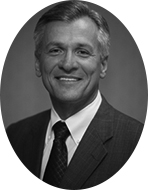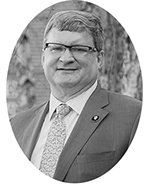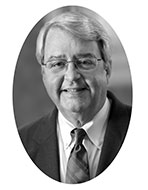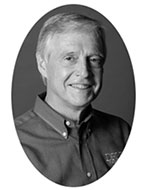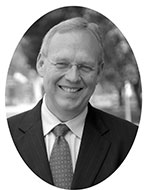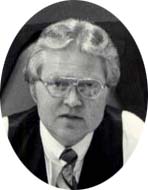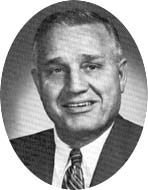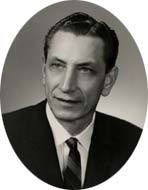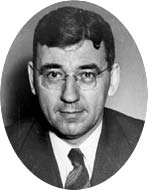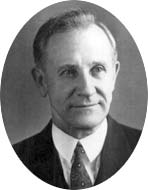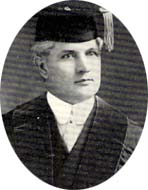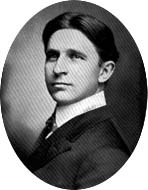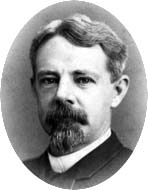Drury was founded in 1873 to offer an environment of strong academic discourse and intellectual achievement. Its founders, Congregationalist home missionaries, felt the need for an academically strong liberal arts college in Southwest Missouri. Drury was patterned after the Congregationalist liberal arts colleges of the North, institutions like Oberlin, Carleton, Dartmouth, Yale and Harvard. After much debate, Springfield was chosen over Neosho, Missouri as the college’s location. James and Charles Harwood of Springfield, the Reverend Nathan Morrison of Olivet, Michigan, and Samuel Drury of Otsego, Michigan joined to organize and endow what they initially named Springfield College. Samuel Drury’s financial gift of $25,000 was the largest, and the college was renamed for his recently deceased son. Reverend Morrison was chosen as president and rang the bell to begin classes on September 25, 1873.
The early curriculum emphasized education, religion, and music. Students came to the college from a wide area, including western Oklahoma. In 1875, Drury celebrated its first graduating class of five students, all of whom were women.
Drury started small, in a single building. When classes begin in 1873, the campus occupied fewer than 1 ½ acres. Twenty-five years later, the campus had expanded to 40 acres, which included Stone Chapel, the President’s house, and three academic buildings. Today, there is a 90-acre campus that encompasses the original site.
Drury College became Drury University on January 1, 2000, reflecting its growing role in higher education. In addition to the established academic programs of early years, Drury students today study in the Breech School of Business Administration, the Hammons School of Architecture, and the Shewmaker Communication Center. They delve into diverse topics encompassing the humanities, the sciences, and the arts. Drury’s offered majors and minors have evolved throughout the years, growing to reflect society’s changing needs.
Drury was one of the first universities in Missouri to offer continuing education and evening classes to meet the needs of non-traditional students. Today, Drury GO serves nearly three thousand students in Springfield and throughout the region.
At the university’s core remains unchanging commitment to preparing students to live and work in today’s world. Diversity, service to communities, and quality academics are benchmarks of a Drury education.
Hail! Alma Mater
Drury to thee
We pledge in word and deed
Our loyalty,
Raising this hymn of praise
Till the heavens ring;
Hail! Alma Mater
Drury, we sing.
“Christ and humanity”
Thy motto strong;
Firm stand thy children true
Against the wrong;
Honor thy watchword,
Service thy aim;
Hail! Alma Mater
Drury, proclaim.
Thy spirit as a fire
Burns in each breast;
With courage drawn from thee
We spur our quest;
Grand be thy destiny
For thee we pray;
Hail! Alma Mater
Drury Alway.
It was less than a decade after the end of the Civil War when Drury’s Congregationalist founders, many of whom were abolitionists, chose Springfield, Missouri as the site for a new college. Springfield was selected, in part, because it had been so terribly scarred by war. In an early description of the college’s mission, Nathan Morrison, Drury’s first President, wrote that the college sought to “minister to the healing of the horrid wounds made by civil war.”
Drury College was founded in 1873 as an “independent church-related” college with a commitment to personalized higher education. Its Congregationalist founders envisioned an institution that would offer all students, regardless of their gender, race or creed, both a sound liberal arts education and a more practical education in various applied studies.
Drury has since maintained relationships with the Christian Church (Disciples of Christ) and the United Church of Christ. The UCC relationship dates back to the founding of the college by Congregationalists from New England. The DOC relationship was established in 1909 with the formal organization of the Drury School of Religion. Both denominational traditions have influenced Drury’s mission.
Today, the Chaplain’s Office offers a variety of spiritually-based campus activities for every member of the Drury community.
 The two cannons that sit proudly in front of Pearsons and Burnham Halls are field pieces from the Civil War. The legend says that in 1885 or 1886, the governor of Missouri distributed several similar cannons to various counties for patriotic display. The two cannons sent to Greene County moved around from place to place for several years before Drury was chosen as a neutral location.
The two cannons that sit proudly in front of Pearsons and Burnham Halls are field pieces from the Civil War. The legend says that in 1885 or 1886, the governor of Missouri distributed several similar cannons to various counties for patriotic display. The two cannons sent to Greene County moved around from place to place for several years before Drury was chosen as a neutral location.
Soon after the cannons were moved to the college campus, one disappeared. For the years afterward, the remaining cannon stayed in its place in front of Pearsons Hall, occasionally used in parades and fired at patriotic celebrations. (It also occasionally had a way of going off right on the campus.) When boys from Springfield High School borrowed the cannon for a celebration in 1905, Drury’s business manager gave them permission to keep it. However, Drury students took it upon themselves to reclaim the cannon and return it to its normal place. From then on, the cannon was mounted on a solid stone pedestal.
In 1913, the cannon that had been lost for about 20 years turned up. The employees of the Frisco shops, where it was found, had been using it for their own patriotic celebrations. A negotiation between Drury students and the Frisco supply keeper resulted in the cannon’s return to its spot in front of Burnham Hall, where it was mounted like the first. The cannons still remain on display, faithfully guarding Drury’s two halls atop their stone pedestals.
